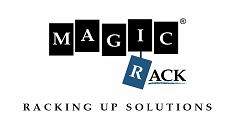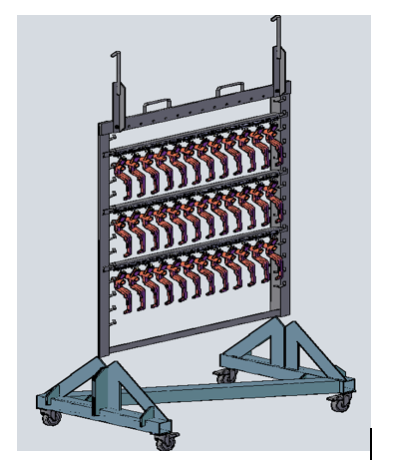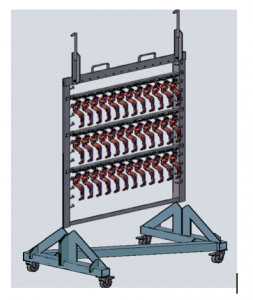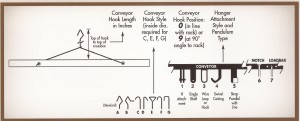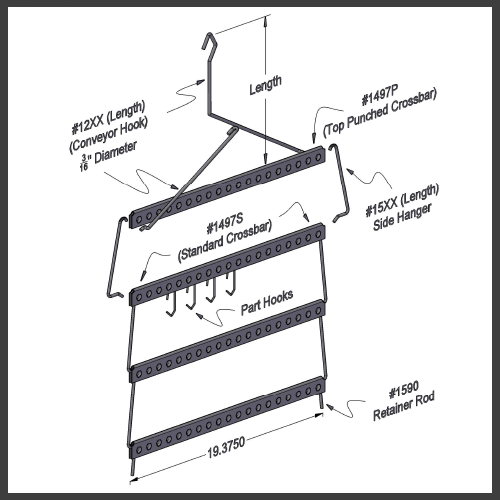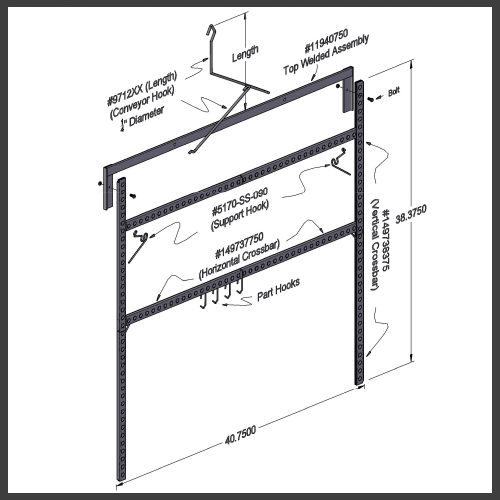Getting Started
How to Increase Part Throughput with Racking – To achieve maximum line speed and part density, both of which directly impact profitability, racks are required for handling mass quantities of parts. Racking can be applied both on and off the line, rather than hanging or removing parts one at a time, maximizing your finishing process. Choosing the right rack design for any system is a challenging decision, and often the most overlooked decision in Powder Coating or E-coat processes.
To begin the process of maximizing part throughput with racking, the first step is evaluating your system and the parts that you are finishing. Our design questionnaire Here is a free survey to help you get started, or our custom design team is available to walk you through the process step by step.
How to increase part throughput with racking
Let’s look at one company as an example. The critical need for the company is to increase line density from 600 parts per day to 2,000-3,000 parts per day, or roughly a 233-400 percent increase in production.
Large numbers of parts are sent out to be finished, which are “daisy-chained” with individual hooks under a load bar. By switching to racking here are four ways this company can “rack” up more money:
- Add more parts to the same space. The first test rack—partially loaded—held the combined parts for three load bars, increasing production by 200 percent. Three parts are now in the same space as one prior to racking.
- Eliminate the labor cost of “daisy-chaining” hooks; it costs 50 percent or more in labor versus racking because of hanging hooks before hanging the actual parts. Profitable finishing lines use racks versus individual hooks to run at maximum line speeds, some up to 70 feet per minute.
- Look at offline loading and unloading. Often racks can be loaded and unloaded offline, allowing the line speed to be increased to its maximum while moving fully loaded racks to and from the line. Sadly, most lines run slower than designed; hindered by “people speed” hanging parts directly on the line.
- Reduce hourly overhead line costs, since racking increases the number of parts finished per foot, per hour, it reduces the cost per part associated with the hourly overhead of the finishing line. These include costs such as chemicals, utilities, maintenance, labor, paint, cleaning, waste disposal, and so on.
When analyzing the racking potential, it is best to stage and load racks at the workstation to eliminate the re-handling of parts. Carts can be used to transport racks to and from the line and use mechanical lifting devices for heavily loaded racks.
You should also aim to eliminate all manual handling of racks if possible. Consider the design of the racks, how they will be stored on carts moving to and from the line, loading and unloading off-line, transporting by truck, and going into a burn-off oven and/or chemical strip tank for cleaning.
The return on investment for racking is often immediate. In summary:
- Increase line density: add more parts per foot
- Labor savings: eliminate daisy-chaining.
- Offline loading/unloading: increase line speed and gain more parts per hour.
- Decrease overhead cost/part: increase profit per part.
To learn more about Production Plus Corp – Makers of the Magic Rack visit our Website or follow us on Youtube to see how our products work.
